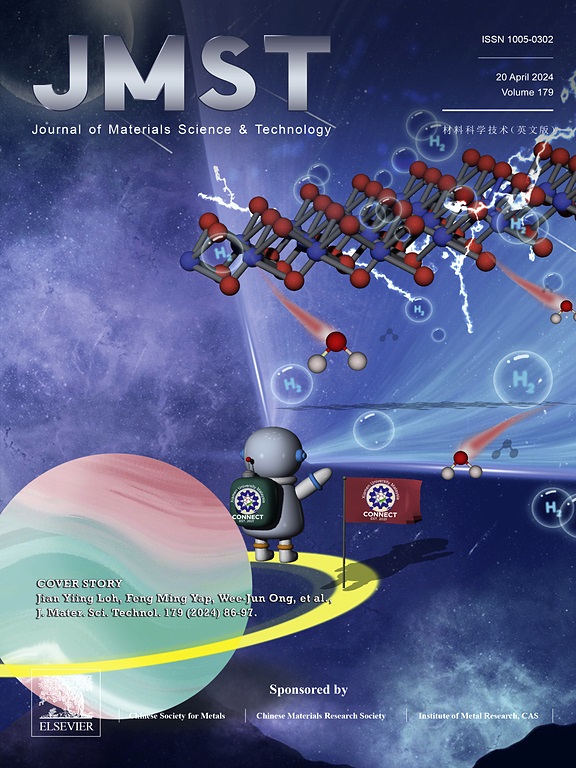Design of a novel oxide@h-BN core-shell structure in stainless steel towards superior corrosion and wear resistance
IF 11.2
1区 材料科学
Q1 MATERIALS SCIENCE, MULTIDISCIPLINARY
引用次数: 0
Abstract
High corrosion- and wear-resistant stainless steels are highly sought after for demanding marine structural applications. However, most stainless steels with high hardness or outstanding self-lubrication exhibit inferior corrosion resistance, and vice versa. In this study, we propose a strategy for wrapping oxide inclusions with the lubricating phase h-BN through in-situ nitrogen alloying in B-bearing stainless steel, forming a novel oxide@h-BN core-shell structure. The oxides exhibited constrained growth within the h-BN shell, which reduced the particle size and increased the number density. This modification enhanced dispersion strengthening, yielding a composite material hardness of 728 HV0.5. The h-BN functioned as a solid lubricant during the wear process, significantly lowering the friction coefficient. Additionally, the high electrical insulation and chemical stability of h-BN effectively separated the oxides from the surrounding matrix, thereby preventing pitting corrosion, which is typically associated with oxide dissolution. The increased nitrogen content in the solid solution also enhanced the content of Cr2O3 and CrN in the passive film, thereby improving its stability and protective capabilities. As a result, the corrosion resistance of this alloy was nearly comparable to that of 316 L stainless steel, whereas its wear performance surpassed that of M2 tool steel. Our findings offer valuable insights into the design of high-performance stainless steels.

求助全文
约1分钟内获得全文
求助全文
来源期刊

Journal of Materials Science & Technology
工程技术-材料科学:综合
CiteScore
20.00
自引率
11.00%
发文量
995
审稿时长
13 days
期刊介绍:
Journal of Materials Science & Technology strives to promote global collaboration in the field of materials science and technology. It primarily publishes original research papers, invited review articles, letters, research notes, and summaries of scientific achievements. The journal covers a wide range of materials science and technology topics, including metallic materials, inorganic nonmetallic materials, and composite materials.
 求助内容:
求助内容: 应助结果提醒方式:
应助结果提醒方式:


